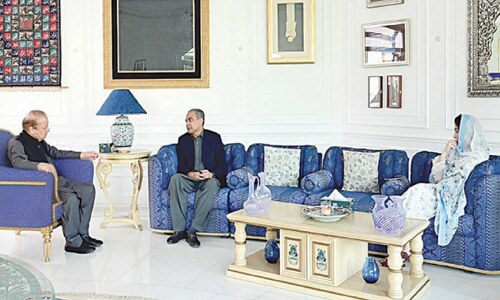RECENTLY, the Federation of American Scientists reported that the Indian Intercontinental Ballistic Missile project is intensifying nuclear competition between India and China. The ICBM is widely seen as a symbol of power projection and hegemonic ambitions.
According to Western analysts, the Indian missile programme has two potential targets, Pakistan and China. However, India’s desire to acquire longer-range missiles indicates that there is a theoretical possibility that in future India could take aim at any major power if it feels threatened.
The Indian media refers to the Agni-V missile as India’s first ICBM, tested twice in 2012 and 2013. It can be fired from mobile launchers anywhere in India — thereby giving it second strike ability — and hit large parts of China, Europe and Africa. India is planning to induct the missile into its armed forces with three multiple independently-targetable re-entry vehicle (MIRV) warheads.
According to Indian analysts, there is a need to develop long-range, high-speed, nuclear-capable missiles and MIRV capabilities. This can only further aid the country’s nuclear expansion. Taking these factors into consideration, one could argue that India’s ‘no first use’ (NFU) doctrine is merely a pretext to obtain civil nuclear assistance from the US, Canada, Australia, Japan and Russia.
India’s missile programme has two potential targets: China and Pakistan.
Indian aspirations to become a permanent member of the United Nations Security Council and a major power appear to be based upon its becoming an offensive military state; after the successful test of Agni-V in 2012, India declared itself a major “missile power”. Its next project is an ICBM named Surya, with a 12,000-kilometre range. Although most of its tests have failed so far, its range and that of its predecessor, further raise the risk of a nuclear arms race, which could trigger conflicts that would have global repercussions.
The ICBM is a first strike weapon, which has less survivability in a conflict because of its exposure to a pre-emptive strike. Therefore the induction of long-range ballistic missile capabilities without any appropriate plan to deal with situations that might lead to a nuclear war will lead to further deterioration in the complex global security environment.
The very foundation of India’s biggest nuclear-capable missile is the space launch vehicle technology delivered to it by countries like the US, France and Germany at different times under the rubric of peaceful scientific development. As of now, the Indian Space Research Organisation is enjoying unconditional technological support from Britain and the US, notwithstanding the fact that there seems to be no significant difference between India’s civilian and military rocket programmes.
In 2005, when the US and India were involved in constructing closer ties in space exploration and satellite navigation, there were reliable reports that Indian scientists were attempting to produce an ICBM. Michael Elleman, a former UN weapons inspector, has in the past expressed his view that India’s missile development pattern was “highly unusual.”
Although India has claimed that it is adhering to the Missile Technology Control Regime (MTCR) rules, the facts on the ground appear to be quite contrary in that the country is not curtailing the spread of nuclear-capable ballistic missiles. One may well ask: how can India gain membership into the 35-nation MTCR, for which it has applied recently, when it is believed to be involved in exporting the missiles and technology to many African, Gulf and Southeast Asian states below the MTCR threshold? How can a state that is seen as violating the treaty without being a member not do so if it is granted membership?
There was a time when India had shocked the world by diverting Canadian-supplied fuel for research and generating power to make nuclear weapons. In 1989, the Bulletin of the Atomic Scientists published an article by Gary Milhollin which gave a detailed chronology of how a satellite guidance system meant for peaceful use was incorporated into the Indian missile programme. Milhollin was of the view that the nuclear blast in 1974 “destroyed illusions about the peaceful atom” and “it is not surprising that India has again taken advantage of civilian imports and technology to further what appears to be a nuclear weapons programme”.
From 1946-2012, the US has been the biggest donor of economic aid to India besides facilitating its nuclear expansion; it does not seem to realise the threat that the India missile programme poses to its interests. In future India could assume a confrontational stance against it over Middle East oil or side with Russia in a conflict, or even confront Russia over Central Asia. Likewise, the India Rapid Reaction Cell: the US must rethink its policies before it is too late, or else it will have to set up another special cell called ‘How to contain India?’
The writers are pursuing their M. Phil degree at the Quaid-e-Azam University, Islamabad.
Published in Dawn, October 8th , 2015
On a mobile phone? Get the Dawn Mobile App: Apple Store | Google Play













































